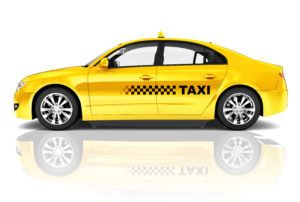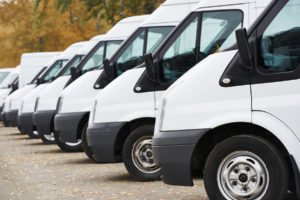The commercial auto market has a long road ahead to reach profitability after five consecutive years of underwriting losses from 2011-2015. While many insurers upped rates in 2016, the year appears to be coming in with another significant underwriting loss.
There isn't a fix-all solution for the industry to get back on track, experts say. Simply raising rates in this challenging line isn't enough. Carriers, insureds and their agents must each play a role in managing today's commercial auto market.
Commercial auto has had the poorest underwriting performance results of any line of commercial insurance in recent history, according to a report by Conning, Commercial Automobile Insurance - Fix Me, Please (2017).
"Through the third quarter of 2016, results remained unfavorable from adverse loss frequency and severity trends," Conning said. "The 2015 loss and combined ratios of 87.7 percent and 108.8 percent, respectively, were 15 points worse than commercial lines overall."
As in personal auto, the rise in claims is cause for concern in commercial auto. The increase is linked to higher medical costs associated with catastrophic injury claims and increased distracted driving.
Chris Moulder, vice president and broker at Worldwide Facilities LLC, believes there are fundamental issues that need to be addressed beyond increasing rates.
"The underwriters that specialize in commercial auto or specialty auto are starting to realize they can't just throw rates at an underperforming class of business and just hope for improvement," Moulder said. "It's going to take a lot of work to improve performance," he said.
Distracted Driving
Distracted driving is one of the biggest issues affecting commercial auto results.
Distracted driving - which includes using a cell phone, texting, using navigation systems and eating while driving -- is to blame for more than 3,000 deaths each year, according to the Centers for Disease Control and Prevention (CDC).
Another 400,000 people are injured each year in distracted driving accidents and some 15 percent of those are generated from commercial motor vehicle accidents.
"It is a significant risk and has been for a number of years," said Andrew Gibb, partner at the law firm Lindabury, McCormick, Estabrook, and Cooper, in a recent A.M. Best webinar titled "Pileup in Commercial Automobile."
"The statistics regarding distracted driving across the board with commercial, personal and regular automobiles are eye-opening."
Distracted driving is a growing problem, but it's not the real reason accidents are trending up, according to Brian Sullivan, editor for Risk Information Inc.
"The reason accidents, claims and deaths are going up is because more people are driving more miles," he said. More people on America's roads equals more accidents.
Other factors are leading to the rise in auto accidents, too. Speed is becoming a greater concern, especially in commercial auto.
"When it comes to speed, there are few things as directly correlated with death and driving as high speeds but states are ignoring that (correlation) and approving (higher speed limits)," Sullivan said.
Even after decades of state laws requiring seat belt use, concerns remain when it comes to auto claims, Sullivan added.
But no other factor has led to such a swift spike in auto claims as miles driven, Sullivan contends.
"The industry went from flat (claims) to up almost overnight about two years ago. What changed that could make claims spike so quickly?" he asked.
"It wasn't distracted driving," Sullivan said. "It's not seat belt use or even speed. The only thing that changed suddenly was miles driven, which after about a seven-year period of going nowhere, literally not rising, started rising (suddenly) at a rate of about 3 percent a year."
Sullivan said miles driven and accident rates aren't linear.
"In other words, a 3 percent rise in driving doesn't lead to a 3 percent rise in accidents," he said.
An increase in miles driven will lead to more accidents because there are now 3 percent more drivers driving on a fixed road base.
"So the opportunity for accidents goes up exponentially and not in a linear fashion," he stated. "That's why accidents and death growth is outstripping miles driven."
Estimates released in February by the Federal Highway Administration show U.S. driving topped 3.2 trillion miles in 2016, the fifth straight year of increased mileage on U.S. roads.
More than 263.6 billion miles were driven in December 2016 alone, which is a .5 percent increase over the previous December.
All Classes Feel the Heat
 All types of transportation classes are feeling the heat. While capacity for most classes of transportation business remains available, insurers are hiking rates on coverage by double-digits for many insureds.
All types of transportation classes are feeling the heat. While capacity for most classes of transportation business remains available, insurers are hiking rates on coverage by double-digits for many insureds.
"Many carriers are pushing rates dramatically; well into double-digit rate increases for a lot of classes and subclasses," Moulder said. Towing, in particular, is a tough class right now, he added. (see Tow Truck Market in Need of Repair in the Feb. 6., 2017 issue of Insurance Journal magazine) "Tow operators are seeing 20-plus percent increases in certain territories."
According to Moulder, local and intermediate sand and gravel haulers are getting hit as well.
"Three or four years ago, a lot of the standard markets and sub-regional insurance carriers were willing to pick those up with ease and with very little rate," he said.
That's not the case today. "Their performance did not meet expectations and I think many of those carriers have decided they didn't want to write local intermediate haulers any longer so that's driven the segment into E&S driven markets."
"Commercial auto is a very closed space, and it's hard to make money unless you know what you're doing out there," said George Wilk, a producer for American Business Insurance Services Inc., a transportation wholesale and retail broker for the taxi, limo and commercial auto fleet sector.
The taxi business is a segment where only a few carriers are willing to play, Wilk said.
When it comes to taxis, "commercial auto scares the crap out of underwriters because historically there's been an attitude by insurance companies that taxi companies just hire people off the boat. They hire immigrants, people who can't get a job anywhere else, and just throw them behind the wheel."
That's the wrong attitude, Wilk said. That attitude could be shared by the public and a reason the Lyfts and Ubers of the world have flourished.
"To some degree, that informed Uber, Lyft and the rideshare apps because that was people's attitude. It's like 'Well, I don't feel comfortable getting in that car. What kind of training do they have? They don't even know that language.'"
After specializing in the taxi market for 30 years, Wilk has come to know that taxis are generally good risks.
"They're doctors and lawyers in their old country, but here they have to start at the bottom so the easiest jobs historically have been to drive a taxi. Then you move on to other things," he said.
Managing Risk
Ultimately it takes expertise to produce good results in commercial auto - expertise at the carrier level and at the agent and broker level, Wilk said.
"When we got in the taxi business 30 years ago, we saw this segment didn't put enough into its infrastructure and didn't put enough into funding for training," he said. "Now that's what we try to bring to the marketplace. That's what agents need to do."
The best thing an agent specialist can do to help a client is become immersed in the niche market. For Wilk, that started with getting involved in loss control.
"We started having loss control committees with the taxi drivers," he said. "The best regulation you can have are the (drivers) regulating themselves as opposed to an insurance company. It's more powerful to have a fellow driver say, 'Hey, what are you doing out there? You're speeding. What are you doing? You're blowing a stop sign.' We tried to get the independent taxi owners and taxi associations to help manage themselves because it's always more powerful when someone who you respect in the industry is telling you something. That's still a process we do today."
Telematic devices are "revolutionizing" the taxi sector and other areas of commercial auto.

"But at the same time, it's made the taxi industry become much more savvy about handling its own business," he said. "Telematics has helped many of the taxi guys stay ahead of the curve where they can reduce their costs through lower claims. If they can manage their claims, they can better predict what their insurance premiums are going to be and flatten those out, and in some cases, even lower them."
He said getting cameras in cars has also helped over the years.
For William P. Curtis Jr., founder of Porter & Curtis LLC, a consultative commercial property/casualty insurance broker, being an advocate for a customer rather than just an expert is the best solution when managing a tough market like commercial auto.
"We act as advocates for our customers. Our role is to solve problems," Curtis said, whose firm doesn't accept any form of carrier profit sharing or contingency income. "The best ideas come from people unburdened by 'expertise' in the insurance business."
He said his firm creates customized risk management programs that reduce the cost of risk and uncertainty. Curtis admits that all auto carriers, personal and commercial, are lamenting their auto experience, but not his customers.
"For our customers, most of the cost is in the retained losses, so even material increases in premium do not necessarily make for a meaningful total cost increase," Curtis said. "For our customers, the way to reduce costs is to reduce losses, because (losses) account for most of their cost. For a typical agent working with fully insured customers, they could be looking into loss sensitive alternatives (small liability deductibles) but I'd seek to distinguish my customers from others in the class by focusing on driver selection (via insurance score, not motor vehicle records) and safety via training."
Comments
I think more analytics needs to be done in areas that actuaries do not fully consider. First, there is the improved protection within cars creating life safety. But remaining alive contributes to long term medical. Secondly, is the pricing for the vehicles considering that older vehicles (while having a lower PD rate) also represent greater risk because of maintenance? Third, miles driven needs to be as an audit-able and more frequently monitored factor. (Of course with today’s technology this should be a no brainer and lead to UBI product development). Finally, I have seen taxi fleets with governing sensors (too fast, too close, too hard a brake) that is used to score a drive and suspend… Where is this in underwriting?
Add Comment